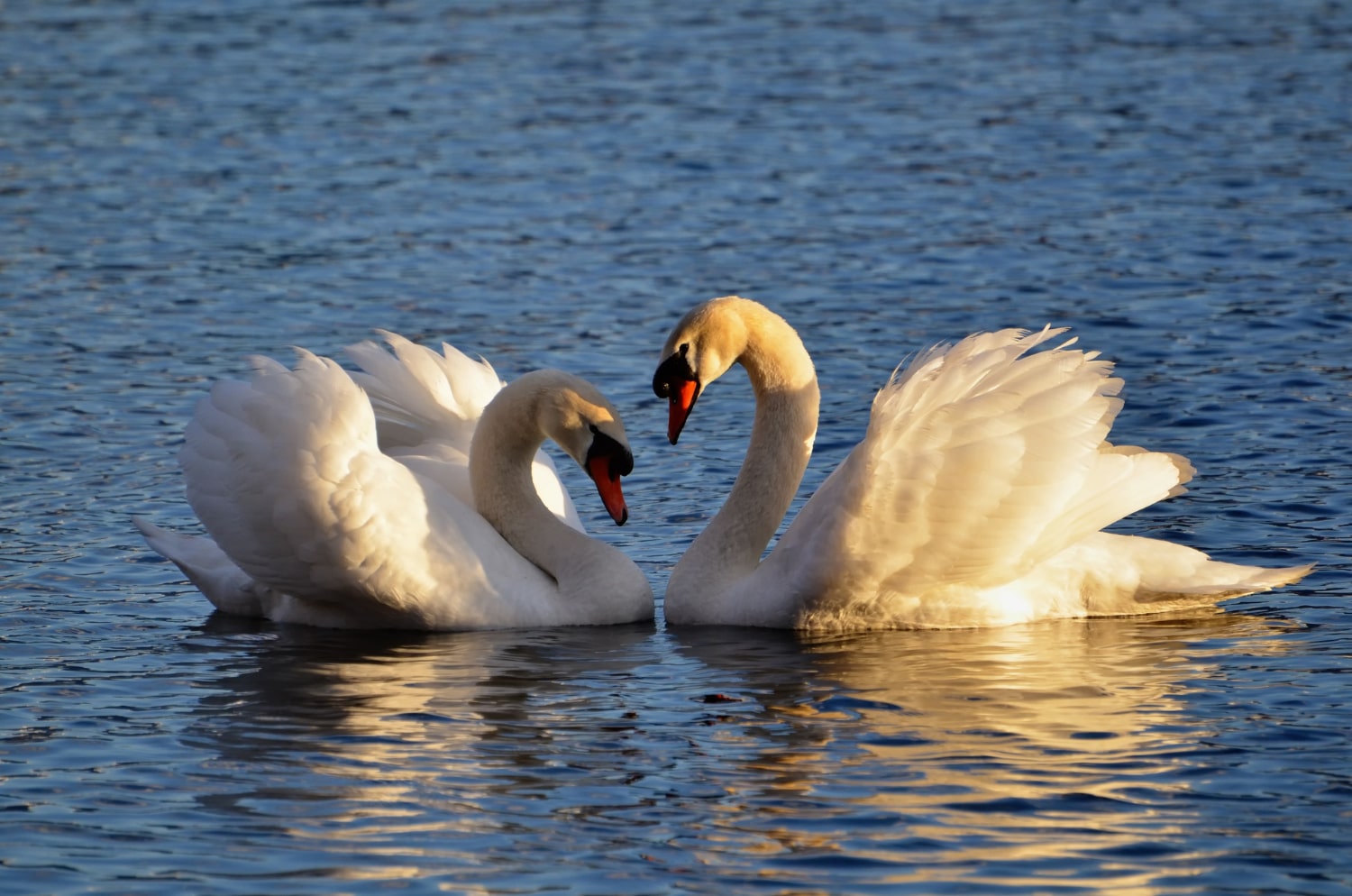Swans are among the most majestic and graceful birds on Earth, admired for their beauty and elegance. Their pure white feathers, smooth movements across the water, and gentle sounds have made them symbols of fidelity, love, and spiritual harmony for centuries. But beyond their stunning appearance lies a wealth of fascinating traits that many people are unaware of. Swans have inspired myths, legends, art, and scientific studies across cultures. In this article, you will discover the most interesting and educational facts about swans that you may not have known.
- Swans are some of the largest waterfowl in the world. Their wingspan can exceed 2.5 meters, and they can weigh up to 15 kilograms. Despite their size, they are excellent flyers and can migrate over hundreds of kilometers.
- Most swan species are monogamous and form lifelong pair bonds. If one partner dies, the surviving swan may remain alone for the rest of its life. This devotion has made swans a universal symbol of loyalty and love.
- There are only seven species of swans in the world, all belonging to the duck family. The most common types are the mute swan, black swan, whooper swan, and tundra swan. Each species differs in feather coloration, vocalizations, and behavior.
- Swans are capable of flying at extremely high altitudes. Some species cross the Himalayas during migration, reaching heights above 8,000 meters. This requires strong chest muscles and a highly efficient respiratory system.
- Swan feathers are coated with a natural oil that makes them waterproof. This allows them to swim in cold water without becoming wet. Swans groom themselves regularly, spreading the oil with their beaks to maintain feather quality.
- Young swans, known as cygnets, are usually gray or brown. As they mature, their feathers gradually turn white. This transformation inspired the famous fairy tale about the ugly duckling who became a beautiful swan.
- Swans are not only strong swimmers but also capable of walking on land. Their walk may appear awkward, but they can cover significant distances. This ability is useful when moving between bodies of water.
- Swans have excellent memory and can remember places, people, and even other swans. They often return to the same nesting sites each year. They can also recognize individuals who have fed or disturbed them.
- The black swan is a separate species native to Australia. It has dark plumage with white wingtips and a bright red bill. In symbolism, the black swan represents rare and unexpected events, giving rise to the philosophical and economic concept of a “black swan.”
- Swan vocalizations vary by species. The whooper swan produces loud, trumpet-like calls that carry over long distances. The mute swan, as its name suggests, is quieter and makes soft hissing or grunting sounds.
- In many countries, swans are legally protected. In the United Kingdom, all wild swans on the River Thames are considered property of the monarch. An annual swan census called “Swan Upping” is held as part of a centuries-old tradition.
- Swans primarily feed on aquatic vegetation. They use their long necks to reach underwater plants at depths of over one meter. Occasionally, they may ingest small invertebrates by accident while foraging.
- During nesting season, swans become highly territorial and can be aggressive. They may attack other birds and sometimes even humans or animals. Their powerful wings are strong enough to deliver painful blows.
- A female swan typically lays between 4 and 8 eggs. She incubates them for about 35 to 40 days, while the male protects the nest. After hatching, the cygnets stay with their parents for several months to learn how to swim and find food.
- In some cultures, it was once believed that swans sing only once in their lives, just before death. This poetic image has inspired myths, songs, and literature. In reality, swans vocalize throughout their lives.
- Swans are highly adaptable and can live both in the wild and in city parks or ornamental ponds. They often coexist peacefully with humans if left undisturbed. They are commonly seen on lakes and rivers in popular recreational areas.
- Thanks to their long necks, swans can forage at depths unreachable by many other water birds. This gives them an advantage in accessing food buried in mud or submerged vegetation. They can feed effectively without fully submerging their bodies.
- Swans have a relatively long lifespan, especially in captivity. They typically live between 10 and 20 years, with some individuals reaching up to 30 years. In the wild, their longevity depends on environmental conditions and predators.
- In folk art and symbolism, swans are often associated with the soul, purity, and spiritual beauty. They appear in patterns, myths, ballets, and heraldry. One of the most famous representations is the ballet “Swan Lake” by Pyotr Tchaikovsky.
- During the molting season, swans temporarily lose the ability to fly for about 4 to 6 weeks. During this vulnerable period, they stay hidden among reeds and avoid open areas. Once molting is complete, their new feathers grow in bright and glossy.
These interesting facts about swans reveal that these birds are not only symbols of beauty but also intelligent, resilient, and well-adapted to life in various environments. Their behavior, loyalty, and grace continue to fascinate people across cultures. Watching a swan can be a moment of true aesthetic pleasure that connects us to the harmony of nature. The more we learn about them, the more we appreciate the richness of the natural world.





